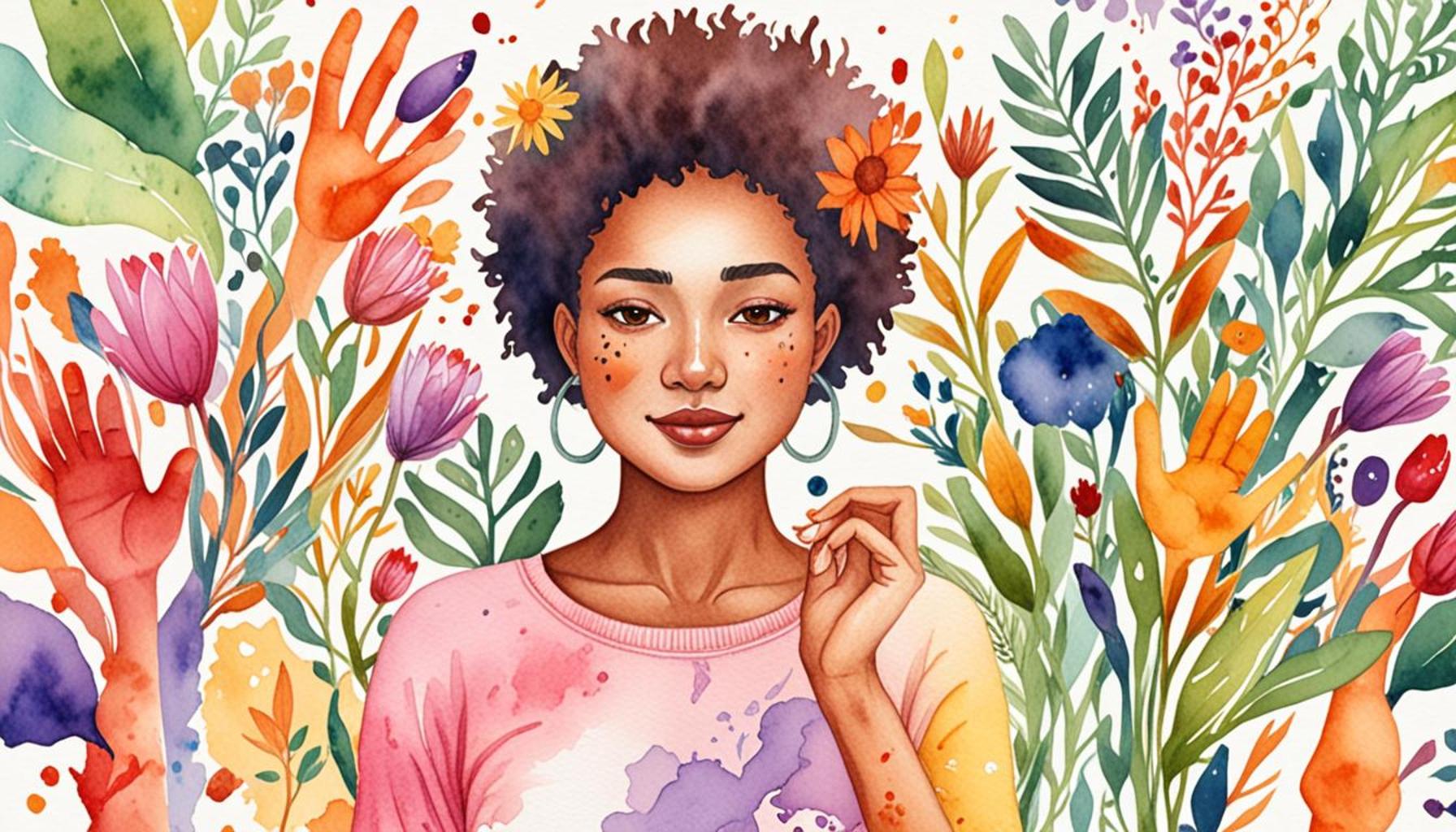How to Build and Maintain Positive Relationships in the Digital Age

Understanding the Digital Interaction Landscape
As we navigate our lives in an increasingly digitized society, understanding the nuances of digital interactions becomes paramount. These connections have transformed from traditional face-to-face encounters to online dialogues, impacting both personal and professional relationships significantly. Socializing online isn’t merely a substitute for in-person interaction; it has become a defining structure of our social fabric.
The Role of Social Media Dynamics
Platforms like Instagram, Twitter, and Facebook have revolutionized how we share information and stay connected. Every post, tweet, and story offers a glimpse into our lives, shaping perceptions and forging connections. However, the emphasis on curated content can create an illusion of intimacy while masking the true nature of our relationships. For instance, many users showcase the best moments of their lives, leading to a phenomenon known as social comparison, which can impact mental well-being and self-esteem.
Virtual Networking: The New Professional Landscape
In the realm of professional networking, platforms like LinkedIn offer invaluable tools for career advancement. These platforms allow individuals to connect with industry leaders, share professional achievements, and seek mentorship opportunities. However, it’s essential to navigate this space thoughtfully. A poorly crafted profile or a generic connection request can hinder one’s networking efforts. Engaging with content posted by connections or participating in relevant online forums can significantly enhance your visibility and strengthen professional ties.
Texting vs. Voice Communication
The mode of communication also influences relational dynamics. Texting has become the default form of interaction, offering convenience and immediacy. Nonetheless, it often lacks emotional depth. A simple text message can be misinterpreted, leading to misunderstandings that might not occur during a voice call. Exploring the nuances between texting and voice communication can help individuals navigate discussions around sensitive topics more effectively.
Overcoming Communication Barriers
While technology provides platforms for connection, the challenge lies in ensuring effective communication. Emotional nuances can be lost in online communication, which can lead to assumptions and misinterpretations. Being aware of this pitfall is the first step towards fostering healthier interactions.
To thrive in this environment, consider adopting effective strategies for enhancing communication. For instance, practicing active listening means genuinely engaging with what others express, even when separated by screens. This can involve asking follow-up questions or summarizing what has been said to confirm understanding.
The Importance of Consistency and Authenticity
Equally important is consistent engagement. Regularly reaching out to friends, family, or colleagues can help maintain bonds and demonstrate that you value the relationship. Furthermore, being authentic in your online interactions fosters trust and credibility. Sharing your authentic self in a digital environment can be as simple as being open about your interests, experiences, and even vulnerabilities.
As we continue to explore ways to cultivate enriching relationships in the digital world, it becomes clear that, despite its challenges, maintaining meaningful connections online is entirely possible. By employing thoughtful strategies and practicing engagement, individuals can ensure that their virtual relationships reflect the depth and quality that enrich their lives.
DISCOVER MORE: Click here to learn about the link between stress and sleep
Navigating the Challenges of Digital Relationships
Building and maintaining positive relationships in the digital age presents unique challenges that require careful consideration and intentionality. Understanding how to leverage digital tools while fostering authentic connections is essential. Here are some key strategies that can aid individuals in overcoming common barriers to effective communication.
Setting Boundaries in Digital Communication
One significant challenge for many is the blurred lines between personal and professional communication due to the omnipresence of digital devices. Establishing boundaries is crucial. For instance, designating specific times for checking emails or engaging with social media can prevent digital fatigue and help maintain focus in relationships. A culture of responsiveness can sometimes create undue pressure to reply immediately, which can hinder deeper connections. By communicating expectations and limits, individuals can manage their interactions more effectively.
Embracing Video Communication
While texting and messaging dominate, the rise of video calls has reintroduced a more personal aspect to online communication. Platforms like Zoom and Skype allow users to share facial expressions and body language, which are vital for fostering understanding and empathy. Using video for both professional meetings and personal catch-ups can bridge gaps created by physical distance, helping to nurture a sense of closeness that might otherwise be lacking.
Practicing Digital Etiquette
In the realm of digital communication, adhering to standard etiquette is paramount. This includes being mindful of language, tone, and timing. Here are some effective digital etiquette tips that can lead to stronger connections:
- Acknowledge Messages: Responding to messages in a timely manner can validate the sender’s feelings and efforts.
- Use Appropriate Language: Tailor your language to suit the platform and the audience, maintaining professionalism in professional settings.
- Limit Distractions: When communicating, particularly in video calls, minimize distractions to show respect and attention to the person on the other side.
- Be Mindful of Tone: Without the benefit of verbal cues, it’s easy for written words to be misinterpreted. Consider the message’s tone and its reception before hitting send.
Utilizing Group Chats for Community Building
Group chats, whether through WhatsApp, Discord, or Facebook Messenger, can offer significant benefits for building community. They create spaces for shared experiences, allowing people to interact with multiple friends or colleagues simultaneously. Engaging in group conversations centered around common interests can cultivate a sense of belonging and connection, which is often crucial for maintaining relationships. Moreover, such platforms can facilitate real-time discussions, quick check-ins, and collaborative planning, bolstering bonds while enhancing coordination.
Ultimately, navigating the complexities of digital relationships requires proactive efforts to engage meaningfully with others. Through setting boundaries, embracing video communication, practicing digital etiquette, and utilizing group chats effectively, individuals can cultivate relationships that thrive in this digital landscape, reflecting the richness and depth of human connection.
It’s crucial to recognize that the landscape of communication has fundamentally transformed due to technology. With social media platforms, instant messaging, and various applications at our disposal, we can connect with others in ways that were unimaginable just a few decades ago. However, while these tools offer incredible opportunities to build and maintain relationships, they also present unique challenges that can easily lead to miscommunication and misunderstandings.One of the most effective ways to cultivate healthy relationships online is through active listening. In digital interactions, it’s easy to misinterpret messages due to the lack of non-verbal cues like tone and body language. By practicing active listening—taking the time to thoroughly read messages, asking clarifying questions, and responding thoughtfully—you can minimize conflicts and foster a deeper connection with others. Additionally, utilizing video calls instead of texts or emails can help restore some of the lost nuances of in-person communication.Another important aspect is maintaining balance in your digital interactions. While it’s tempting to stay constantly connected, over-reliance on technology can have adverse effects on your relationships. It’s beneficial to set boundaries regarding device usage, such as allocating specific times for social media or limiting notifications, allowing you to be more present and engaged during face-to-face interactions.Moreover, be mindful of how you curate your online presence. Sharing positive content and supporting friends through virtual spaces can enhance your relationships. Regular check-ins, even through a simple emoji or an encouraging message, can go a long way in ensuring friends and family feel valued and noticed in the fast-paced digital age. With these strategies, you can effectively bridge the gap between technology and genuine human connection, ensuring your relationships thrive amidst the rapid advances of the digital world.
DISCOVER MORE: Click here to learn about plant-based diets
Fostering Authentic Connections Online
As the digital landscape continues to evolve, so too must our approach to building and maintaining positive relationships. The connections we form online can be just as meaningful as those that develop in person when nurtured appropriately. Here are effective strategies for fostering authentic connections in a digital environment.
Engaging in Active Listening
In a world filled with distractions, the art of active listening has never been more critical. When communicating online, it’s easy to multi-task or skim messages without fully engaging. However, taking the time to listen thoughtfully can make a significant difference. Emphasizing paraphrasing or summarizing conversations before responding not only demonstrates your engagement but also validates the other person’s feelings. This approach can transform a simple interaction into a meaningful dialogue.
Celebrating Milestones Virtually
Celebrating important milestones, whether personal or professional, is essential for maintaining strong connections. In the digital age, this can include sending heartfelt messages, hosting virtual parties, or utilizing social media platforms to share moments publicly. A study by the Pew Research Center revealed that 69% of social media users value the connection they maintain with friends and family through these platforms. By acknowledging birthdays, work promotions, or important achievements, individuals foster a sense of community and collective support, which strengthens relationships.
Creating Meaningful Content Together
Another innovative way to build relationships is through collaborative content creation. Whether it’s working on a shared blog, creating podcasts, or even co-hosting virtual events, the act of creating something together can enhance connections. These collaborative endeavors not only leverage the strengths of each participant but also foster a sense of ownership and partnership. Participating in content creation allows for deeper discussions, shared experiences, and displays of creativity that can expand mutual understanding and respect.
Utilizing Social Media Strategically
While social media can sometimes feel overwhelming, using it strategically can enhance relationships. Engaging meaningfully with others’ posts—through comments, likes, or shares—can keep you updated and show support. One effective way to strengthen these connections is through the practice of curated content sharing. By sharing relevant articles, videos, or memes that resonate with both your interests and your friends’ or colleagues’ preferences, you initiate conversations and maintain ongoing interactions. This mutual sharing fosters a sense of reciprocity and keeps lines of communication open, enhancing relational bonds.
Encouraging Open Dialogue
Lastly, encouraging open dialogue about mental health, challenges, or personal experiences can deepen connections. Given the prevalence of isolation and anxiety linked to the digital era, being willing to share vulnerabilities can invite others to do the same. Creating a safe space for these types of conversations is key; consider establishing regular check-ins with friends or colleagues where the focus is on emotional well-being. Such practices can not only solidify friendships but also create supportive networks where individuals feel valued and understood.
In summary, fostering authentic connections in the digital age requires intentional effort. By engaging in active listening, celebrating milestones, creating meaningful content together, utilizing social media strategically, and encouraging open dialogue, individuals can cultivate and sustain positive relationships that thrive amidst the complexities of modern communication.
DIVE DEEPER: Click here to discover more about cultural influences on nutrition
Conclusion: Navigating the Digital Relationship Landscape
In conclusion, building and maintaining positive relationships in the digital age presents both challenges and opportunities. As technology reshapes the way we connect, it is crucial to adapt our methods to ensure these connections remain authentic and meaningful. Active listening, celebrating milestones, and participating in collaborative content creation all serve as powerful tools to deepen our connections online. Moreover, utilizing social media strategically allows us to stay engaged with our loved ones while promoting a sense of community and support.
The importance of open dialogue cannot be overstated, especially in an era marked by social isolation and mental health concerns. By sharing our vulnerabilities and creating safe spaces for honest conversations, we not only strengthen our personal bonds but also contribute to a wider culture of acceptance and understanding.
As we navigate this complex digital landscape, remember that the essence of relationships lies in genuine connection. They require consistent effort and mindfulness; thus, it’s essential to remain intentional in our communication and engagement. With the right strategies and a commitment to nurturing these bonds, we can cultivate networks that thrive both online and offline. As we embrace the digital complexities, let us strive for relationships that are not just connections, but lasting partnerships built on trust, respect, and shared experiences.


